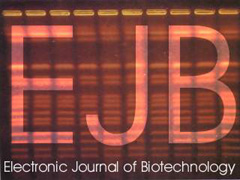Abstract
Biocatalysts are inherently labile; therefore their operational stability is of paramount importance for any bioprocess. The problem of biocatalyst stability has been tackled from different perspectives, which are reviewed in the present paper. Inherently stable biocatalysts are well appreciated and a systematic effort is being done in the search of new organisms that harbor them. The potential of extremophiles has recently been recognized. Moreover, cloning such termophilic genes into more suitable mesophilic hosts is now at hand to produce stable biocatalysts. Another approach is to use site-directed mutagenesis to code for more stable proteins. A relevant number of actual industrial biocatalysts are being produced using such genetic and protein engineering tools. Operational stabilization of biocatalysts is an alternative. Immobilized and crystallized biocatalysts are stable forms already in use. Also engineering the reaction media can contribute to biocatalyst stabilization. This is a key factor for using enzymes in organic synthesis where non-aqueous media are mandatory or at least highly desirable. Bioreactor design requires sound expressions to describe biocatalyst inactivation under operation conditions. Unfortunately, most information has been gathered in non-reactive situations, which poorly describe actual behavior. Models are proposed to consider the presence of substrate and products on biocatalyst stability and thus describe properly bioreactor performance.
Upon acceptance of an article by the journal, authors will be asked to transfer the copyright to Electronic Journal of Biotechnology, which is committed to maintain the electronic access to the journal and to administer a policy of fair control and ensure the widest possible dissemination of the information. The author can use the article for academic purposes, stating clearly the following: "Published in Electronic Journal of Biotechnology at DOI:10.2225/volXX-issueX-fulltext-XX".
The Copyright Transfer Agreement must be submitted as a signed scanned copy to biotec@ucv.cl. All authors must send a copy of this document.
